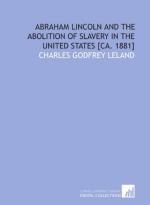|
This section contains 1,386 words (approx. 5 pages at 300 words per page) |

|
SOURCE: Luis, William. “The Antislavery Novel and the Concept of Modernity.” Cuban Studies 11, no. 1 (January 1981): 33-47.
In the following excerpt, Luis argues that Cuba's nineteenth-century abolitionist literature grew out of the evolution from Romanticism toward Realism and was also a response to the increasingly harsh treatment of slaves as the island's black population grew larger than the white population.
As a politico-literary process, the antislavery novel developed in the first half of the nineteenth century at the request of Domingo del Monte, who was perhaps the most important and influential critic of his time.1 A belated Neo-classicist, Del Monte opposed Romanticism and encouraged his writer friends to abandon this form of art in favor of a more realistic type of literature. Del Monte commissioned Félix Tanco y Bosmeniel's Escenas de la vida privada en la Isla de Cuba,2 Francisco Manzano's Autobiografía (1840), and Anselmo Suárez y...
|
This section contains 1,386 words (approx. 5 pages at 300 words per page) |

|


